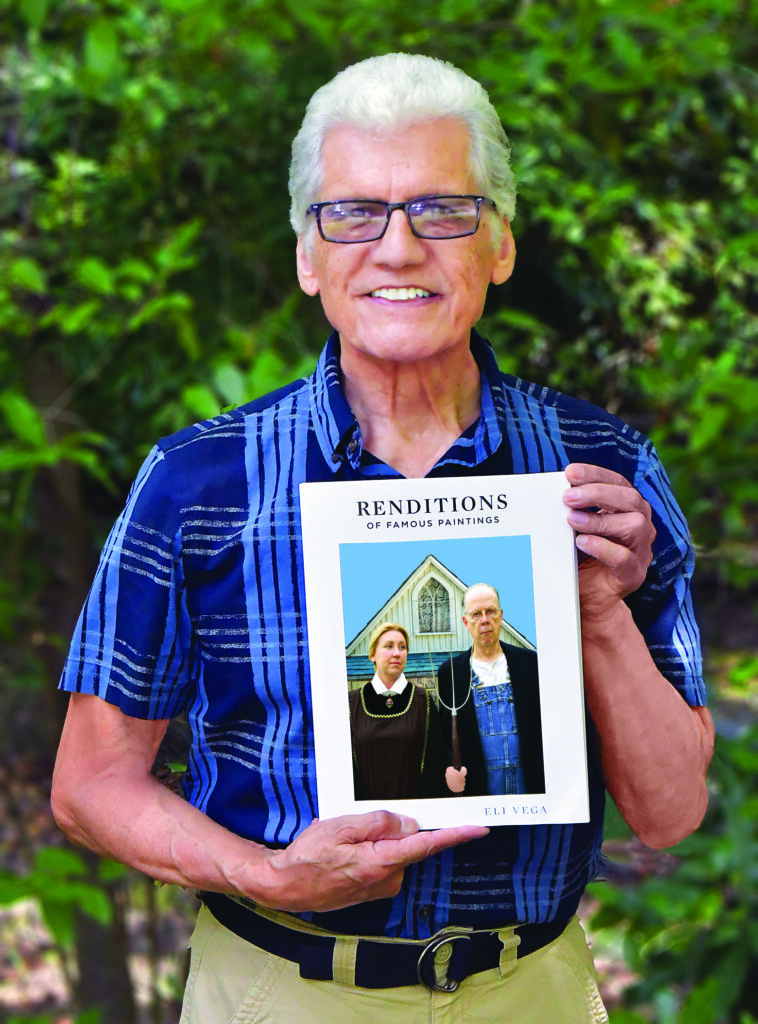28 Feb 2023 Author of the Month: Eli Vega
By Susan L. Peterson
“Exceeded expectations” might very well be Eli Vega’s tagline.
He was born in a railroad boxcar. It served as his parents’ makeshift home while they were working in Wyoming. As migrant workers, they followed work from Texas and into the Northwest, never remaining long in one place. Growing up, Vega spoke only Spanish at home, so it was no surprise that he failed first grade due to a language barrier.
But during his adolescent years, Vega decided he wanted to “change his story.” He wanted to live a life he envisioned for himself, not one that others expected of him. And he did.

As a young child, he always loved art and drawing. After graduation, he attended Texas Tech University and majored in art. But when he compared his work to that of other students, he realized his limitations as an artist. Instead, he followed a different, more lucrative path. After earning degrees in sociology and later human resources (HR) management from the University of Utah, he worked in the HR field with firms in Texas and Colorado.
Vega realized that corporate executives and others who worked with him would not have guessed he was from such humble origins. It was for this reason that he decided in 1993 to publish his first book, “I Always Wanted To Be Somebody (But, I Settled For Much More: Me).” His intent was to motivate others and let them know that no matter where you start, making good decisions and doing your best can lead to positive outcomes. He often passed up parties, choosing instead to work on the book at night and on weekends for more than two years. He describes the finished product as “a book about what to do when you don’t know what to do.”
After a decade of working in HR, he picked up a camera and rediscovered how much he enjoyed the creative process. Winning a photography contest gave him a boost of confidence. He started selling photos for postcards and magazines, then began to amass a strong client base. People were coming to him.
After a 20-year career in HR and doing part-time photography, Vega again rewrote his life script. In 2010, he opened his own full-time photography business in Colorado.

Vega’s photographs received high praise. He credits his artistic background, which gives him insights into elements of composition and design. People tell him his photos look like paintings.
In 2016, Vega moved to Arkansas, drawn here by the beauty of Hot Springs and the lower cost of living as compared to Colorado. In 2017, he published the fourth edition of his award-winning book, ”Right Brain Photography: Be an Artist First.” He began giving workshops across the U.S. at various national parks and taught classes for several colleges and universities.
Last year, he published a third book, “Renditions of Famous Paintings.” It was developed over a two-and-a-half-year period, using Hot Springs and its citizens as a prop. “It truly was a community project,” he said. “I had a support team that involved a city manager, the owner of a costume store, the Chamber of Commerce, and many others.”
“Renditions” includes his interpretative illustrations of such well-known artworks as the “Mona Lisa” and works by famous painters like Georgia O’Keeffe, Edward Hopper and Grant Wood, whose “American Gothic” rendition appears on the cover. In the book, Vega also gives details on how he created all 30 scenarios by using a combination of photography and photo editing software.

Vega truly has succeeded in writing his life story. On the way, he has shared his love for personal and artistic endeavors with many others. One can only wonder what adventures might be included in this creative artist’s next chapter.
More about Vega can be found on his website, EliVega.net. His books, photographs and prints are available there as well. You can also see his weekly postings on his Facebook page, Eli Vega Photography.
- Author of the Month: Poet Sandy Longhorn - December 1, 2025
- Author of the Month: Latasha Davis - November 4, 2025
- Author of the Month: Jennifer Case - September 30, 2025








